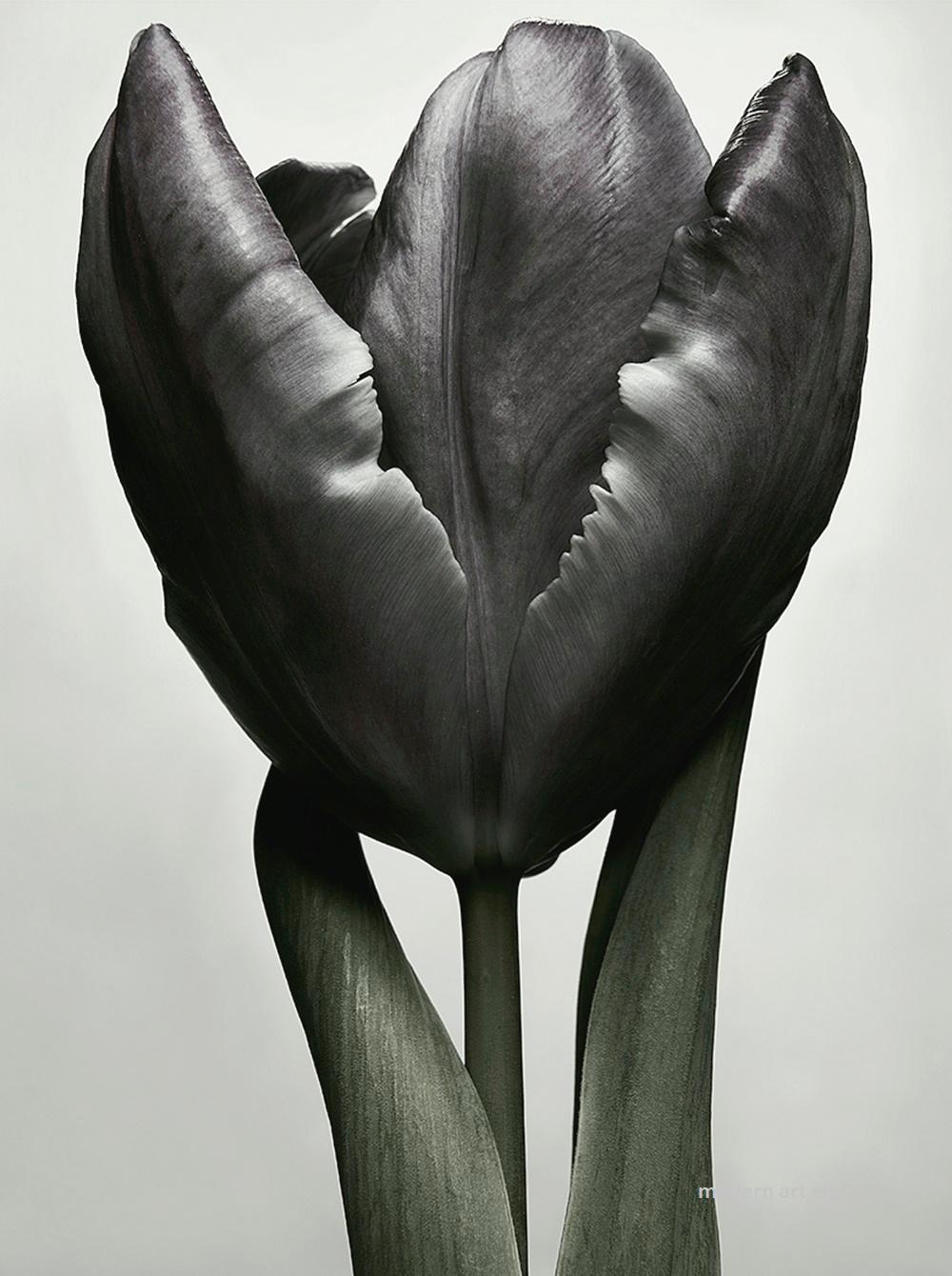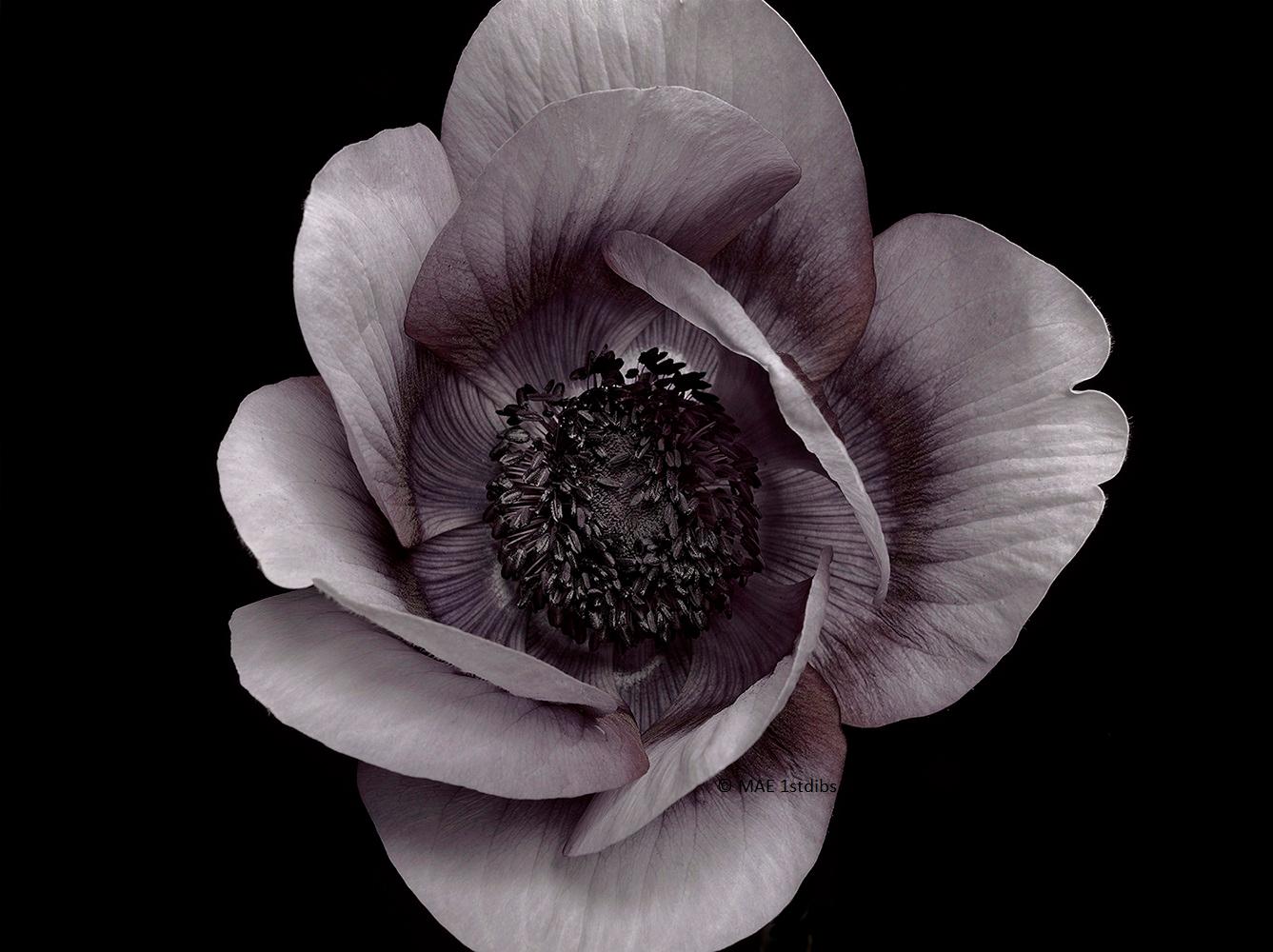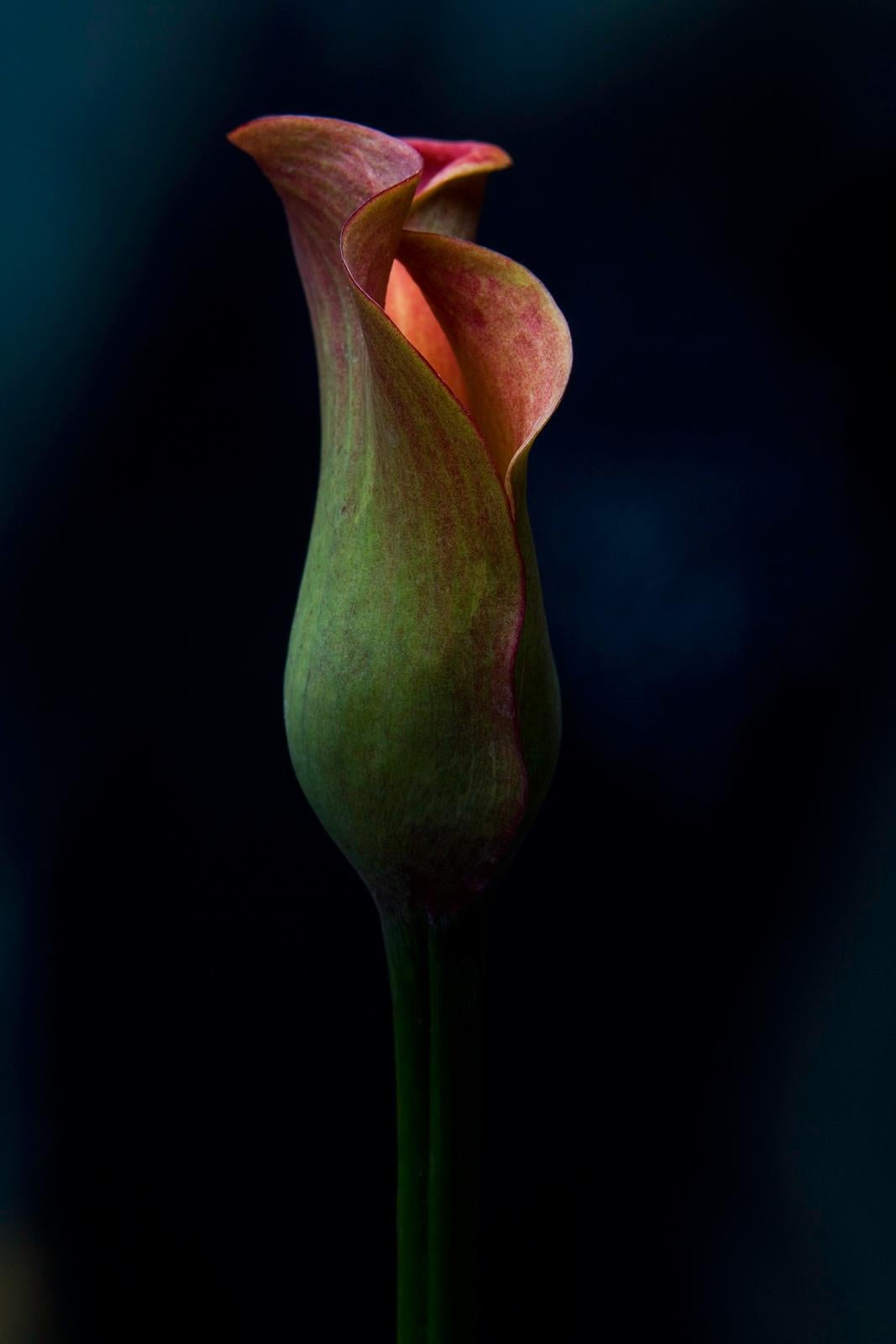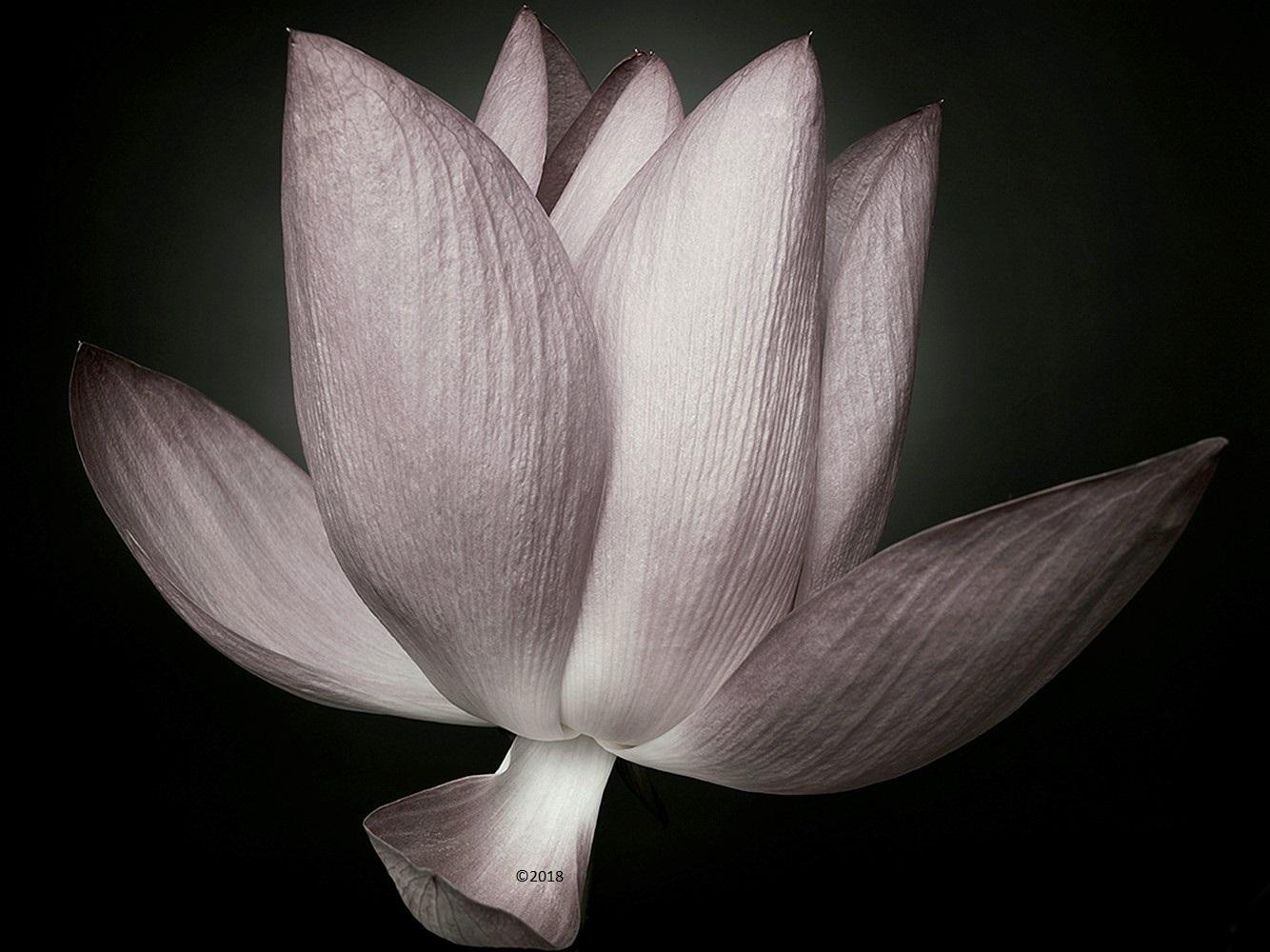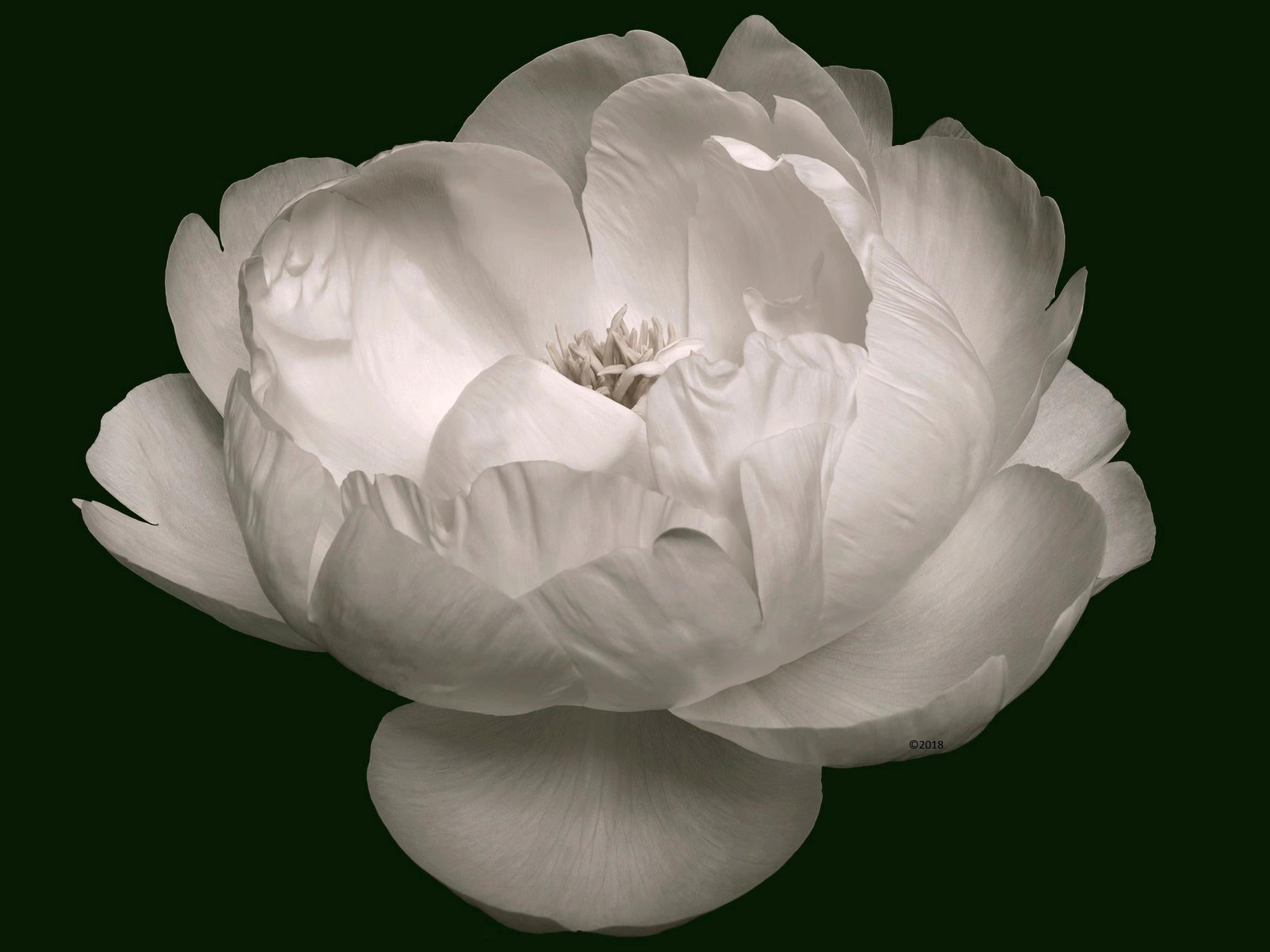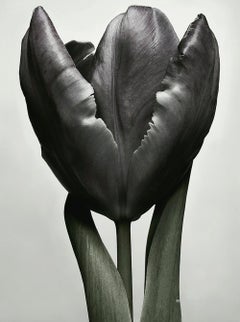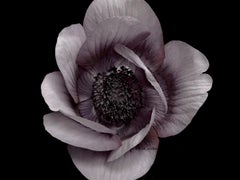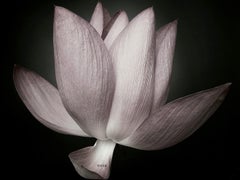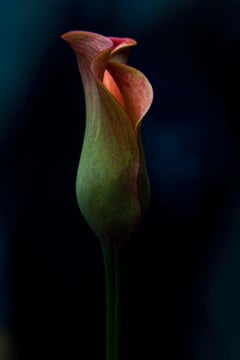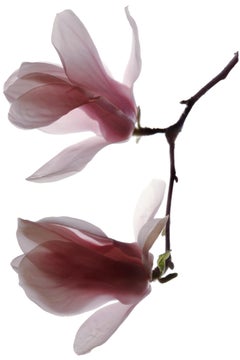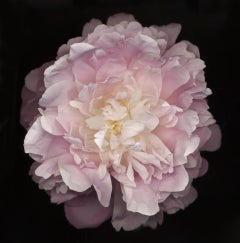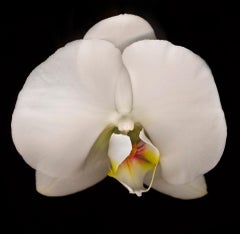Items Similar to Zen Beauty - Flower Portrait series - Matted and ready to frame (16 x 21" image)
Want more images or videos?
Request additional images or videos from the seller
1 of 7
MAE CuratesZen Beauty - Flower Portrait series - Matted and ready to frame (16 x 21" image)
$1,950
£1,473.55
€1,701.59
CA$2,724.83
A$3,023.43
CHF 1,583.74
MX$37,075.36
NOK 20,144.59
SEK 19,015.64
DKK 12,689.82
Shipping
Retrieving quote...The 1stDibs Promise:
Authenticity Guarantee,
Money-Back Guarantee,
24-Hour Cancellation
About the Item
This piece has been matted - image of flower is: 16 x 21.5 in. - matted with 8 ply museum archival matt, external dimensions: 22.5 x 28 in.- Edn of 25.
3 sizes, framing available upon request.
About this series:
With great patience and respect, the photographer observes the life cycle of the flower, viewing the subject much like a portrait photographer views a person, choosing the particular instance which in his view represents the essence of the flower. We feel the piece evokes a certain poetic, quiet, Zen beauty.
-----
The artist was born in the UK in 1971, and after leaving Central Saint Martin’s in London in 1992, determined to explore a deeper sense of meaning, and contemplate life, he journeyed to Japan where he lived in a Zen Buddhist monastery and lived and studied in a temple in the mountains of Yamanashi for months, during which he studied Zen Buddhism and joined the monks in their daily prayers and routines.
Over time, the subject matter for this series is borne out of a respect of the inner life of living things, Nature, in this instance and a sense of “mono no aware” (the art of impermanence). His artist vision has drawn influences from his Western artistic culture, Japanese classical aesthetics, and the 1933 classical text, “In Praise of Shadows” by Japanese literary titan, Junichiro Tanizaki (1886–1965). Tanizaki, as translated by scholars, examines the singular standards of Japanese aesthetics and their stark contrast with the value systems of the industrialized West. He writes:
“We find beauty not in the thing itself but in the patterns of shadows, the light and the darkness, that one thing against another creates… Were it not for shadows, there would be no beauty.”
“Shadows” presumably refers to the subtle interplay between light and darkness, not a stark dualism between black and white. Hence, the quiet beauty expressed in shadows of light and darkness as a living flower moves through the passage of life.
The art of impermanence refers to a “pathos” (aware) of “things” (mono), deriving from their transience. The flower is a perfect metaphor for the expression of impermanence and beauty. Each flower has its own distinctive character and temperament, and is in constant dynamic motion. Through the passage of its life, it blossoms to its greatest peak, turning always towards the light until they eventually give up their petals. The artist documents this process through hundreds of images over time, essentially capturing the essence of the life of the subject. Both the visual aesthetic and process of his art calls to mind the transcient nature of things and reminds us to rejoice what we do have.
In his gold series - Gold, in turn associated with the sacred, the divine, with supernatural powers and even immortality, has been recognized since ancient times in all the great civilizations as a noble material. Gold leaves have been used to decorate shrines, temples, statues, armor, jewelry since ancient times. At different times of the day, the light reflects off the gold differently as the day progresses, providing a visual context in which the celebration of life was captured.
The artist has been recognized for his work for example, with a merit award at the Art Directors Club 87th Annual Awards N.Y. (2008). His work has been in group exhibitions as a runner up at the National Portrait Gallery in London as part of the Taylor Wessing London – Elle Commendation Portrait Awards, and at the Kiyosato Photo Art Museum in 1999. A successful photographer, the artist’s commercial clients include Adidas, Estee Lauder, Hugo Boss and shot celebrities for magazines / editorials featuring Sam Smith, Jeremy Renner, Gwyneth Paltrow, David Fincher, Zhang Ziyi amongst other faces. His work has been collected by: Cohn and Wolfe collection London, Kiyosato museum of photography, Hyatt Hotels and numerous private collectors worldwide.
- Creator:MAE Curates (American)
- Dimensions:Height: 22.5 in (57.15 cm)Width: 28 in (71.12 cm)
- Medium:
- Movement & Style:
- Period:
- Condition:
- Gallery Location:Los Angeles, CA
- Reference Number:1stDibs: LU24113846532
About the Seller
5.0
Vetted Professional Seller
Every seller passes strict standards for authenticity and reliability
Established in 2011
1stDibs seller since 2013
253 sales on 1stDibs
Typical response time: 7 hours
- ShippingRetrieving quote...Shipping from: Los Angeles, CA
- Return Policy
Authenticity Guarantee
In the unlikely event there’s an issue with an item’s authenticity, contact us within 1 year for a full refund. DetailsMoney-Back Guarantee
If your item is not as described, is damaged in transit, or does not arrive, contact us within 7 days for a full refund. Details24-Hour Cancellation
You have a 24-hour grace period in which to reconsider your purchase, with no questions asked.Vetted Professional Sellers
Our world-class sellers must adhere to strict standards for service and quality, maintaining the integrity of our listings.Price-Match Guarantee
If you find that a seller listed the same item for a lower price elsewhere, we’ll match it.Trusted Global Delivery
Our best-in-class carrier network provides specialized shipping options worldwide, including custom delivery.More From This Seller
View AllZen Beauty - Flower Portrait series - Matted and ready to frame (16 x 21" image)
By MAE Curates
Located in Los Angeles, CA
This piece has been matted - image of flower is: 16 x 21.5 in. - matted with 8 ply museum archival matt, external dimensions: 22.5 x 28 in.- Edn of 25.
3 sizes, framing available up...
Category
21st Century and Contemporary Contemporary Landscape Photography
Materials
Archival Pigment
Zen Beauty - Flower Portrait series - Matted and ready to frame (16 x 21" image)
By MAE Curates
Located in Los Angeles, CA
This piece has been matted - image of flower is: 16 x 21.5 in. - matted with 8 ply museum archival matt, external dimensions: 22.5 x 28 in.- Edn of 25.
3 sizes, framing available up...
Category
21st Century and Contemporary Contemporary Landscape Photography
Materials
Archival Pigment
Photography - Flower Series (30 x 40 image)
By MAE Curates
Located in Los Angeles, CA
This is a series of photography portraiture of flowers as subject matter. Each image also be custom hand made to be paved in 22 k gold leaf. See pictures attached.
About this series...
Category
21st Century and Contemporary Contemporary Still-life Photography
Materials
Photographic Paper
Zen Beauty - Contemporary Floral Still Life - Flower photography series - Lotus
By MAE Curates
Located in Los Angeles, CA
This is a color photography of a lotus flower as part of our flower / still life series.
Image dimensions: 16 x 21.5 in. Edition of 25.
External dimensions: 22.5 x 28 in.
Matted with 8 ply museum archival matt.
Signed, numbered by photographer on a certificate of authenticity.
About this series:
With great patience and respect, the photographer observes the life cycle of the flower, viewing the subject much like a portrait photographer views a person, choosing the particular instance which in his view represents the essence of the flower. We feel the piece evokes a certain poetic, quiet, Zen beauty.
The photographer was a London Central Saint Martins graduate and lived in a short spell in a monastery in Japan, and now primarily lives in Japan.
-----
The artist was born in the UK in 1971, and after leaving Central Saint Martin’s in London in 1992, determined to explore a deeper sense of meaning, and contemplate life, he journeyed to Japan where he lived in a Zen Buddhist monastery and lived and studied in a temple in the mountains of Yamanashi for months, during which he studied Zen Buddhism and joined the monks in their daily prayers and routines.
Over time, the subject matter for this series is borne out of a respect of the inner life of living things, Nature, in this instance and a sense of “mono no aware” (the art of impermanence). His artist vision has drawn influences from his Western artistic culture, Japanese classical aesthetics, and the 1933 classical text, “In Praise of Shadows” by Japanese literary titan, Junichiro Tanizaki (1886–1965). Tanizaki, as translated by scholars, examines the singular standards of Japanese aesthetics and their stark contrast with the value systems of the industrialized West. He writes:
“We find beauty not in the thing itself but in the patterns of shadows, the light and the darkness, that one thing against another creates… Were it not for shadows, there would be no beauty.”
“Shadows” presumably refers to the subtle interplay between light and darkness, not a stark dualism between black and white. Hence, the quiet beauty expressed in shadows of light and darkness as a living flower moves through the passage of life.
The art of impermanence refers to a “pathos” (aware) of “things” (mono), deriving from their transience. The flower is a perfect metaphor for the expression of impermanence and beauty. Each flower has its own distinctive character and temperament, and is in constant dynamic motion. Through the passage of its life, it blossoms to its greatest peak, turning always towards the light until they eventually give up their petals. The artist documents this process through hundreds of images over time, essentially capturing the essence of the life of the subject. Both the visual aesthetic and process of his art calls to mind the transcient nature of things and reminds us to rejoice what we do have.
In his gold series - Gold, in turn associated with the sacred, the divine, with supernatural powers and even immortality, has been recognized since ancient times in all the great civilizations as a noble material. Gold leaves have been used to decorate shrines, temples, statues, armor, jewelry since ancient times. At different times of the day, the light reflects off the gold differently as the day progresses, providing a visual context in which the celebration of life was captured.
The artist has been recognized for his work for example, with a merit award at the Art Directors Club 87th Annual Awards N.Y. (2008). His work has been in group exhibitions as a runner up at the National Portrait Gallery in London as part of the Taylor Wessing London – Elle Commendation Portrait Awards, and at the Kiyosato Photo Art Museum in 1999. A successful photographer, the artist’s commercial clients include Adidas, Estee Lauder, Hugo Boss and shot celebrities for magazines / editorials featuring Sam Smith, Jeremy Renner, Gwyneth Paltrow, David Fincher, Zhang Ziyi...
Category
21st Century and Contemporary Contemporary Landscape Photography
Materials
Photographic Paper
Zen Beauty - Contemporary black and white photography of Flower series - medium
By MAE Curates
Located in Los Angeles, CA
This photography is part of a series of zen like beauty of Flowers art photography.
In 3 sizes.
This piece:
Print size: 30 x 37.5 in.
Image dimensions are 22 x 30 in.
Matted in ...
Category
21st Century and Contemporary Contemporary Landscape Photography
Materials
Photographic Paper
Zen Beauty - Contemporary black and white photography of Flower series - medium
By MAE Curates
Located in Los Angeles, CA
This photography is part of a series of zen like beauty of Flowers art photography.
In 3 sizes.
This piece:
Print size: 30 x 37.5 in.
Image dimensions are 22 x 30 in.
Matted in 8 ply museum archival matt.
Ed of 15, signed, editioned on a Certificate of Authenticity by by photographer.
About this series:
With great patience and respect, the photographer observes the life cycle of the flower, viewing the subject much like a portrait photographer views a person, choosing the particular instance which in his view represents the essence of the flower. We feel the piece evokes a certain poetic, quiet, Zen beauty.
The photographer was a London Central Saint Martins graduate and lived in a short spell in a monastery in Japan, and now primarily lives in Japan.
-----
The artist was born in the UK in 1971, and after leaving Central Saint Martin’s in London in 1992, determined to explore a deeper sense of meaning, and contemplate life, he journeyed to Japan where he lived in a Zen Buddhist monastery and lived and studied in a temple in the mountains of Yamanashi for months, during which he studied Zen Buddhism and joined the monks in their daily prayers and routines.
Over time, the subject matter for this series is borne out of a respect of the inner life of living things, Nature, in this instance and a sense of “mono no aware” (the art of impermanence). His artist vision has drawn influences from his Western artistic culture, Japanese classical aesthetics, and the 1933 classical text, “In Praise of Shadows” by Japanese literary titan, Junichiro Tanizaki (1886–1965). Tanizaki, as translated by scholars, examines the singular standards of Japanese aesthetics and their stark contrast with the value systems of the industrialized West. He writes:
“We find beauty not in the thing itself but in the patterns of shadows, the light and the darkness, that one thing against another creates… Were it not for shadows, there would be no beauty.”
“Shadows” presumably refers to the subtle interplay between light and darkness, not a stark dualism between black and white. Hence, the quiet beauty expressed in shadows of light and darkness as a living flower moves through the passage of life.
The art of impermanence refers to a “pathos” (aware) of “things” (mono), deriving from their transience. The flower is a perfect metaphor for the expression of impermanence and beauty. Each flower has its own distinctive character and temperament, and is in constant dynamic motion. Through the passage of its life, it blossoms to its greatest peak, turning always towards the light until they eventually give up their petals. The artist documents this process through hundreds of images over time, essentially capturing the essence of the life of the subject. Both the visual aesthetic and process of his art calls to mind the transcient nature of things and reminds us to rejoice what we do have.
In his gold series - Gold, in turn associated with the sacred, the divine, with supernatural powers and even immortality, has been recognized since ancient times in all the great civilizations as a noble material. Gold leaves have been used to decorate shrines, temples, statues, armor, jewelry since ancient times. At different times of the day, the light reflects off the gold differently as the day progresses, providing a visual context in which the celebration of life was captured.
The artist has been recognized for his work for example, with a merit award at the Art Directors Club 87th Annual Awards N.Y. (2008). His work has been in group exhibitions as a runner up at the National Portrait Gallery in London as part of the Taylor Wessing London – Elle Commendation Portrait Awards, and at the Kiyosato Photo Art Museum in 1999. A successful photographer, the artist’s commercial clients include Adidas, Estee Lauder, Hugo Boss and shot celebrities for magazines / editorials featuring Sam Smith, Jeremy Renner, Gwyneth Paltrow, David Fincher, Zhang Ziyi...
Category
21st Century and Contemporary Contemporary Landscape Photography
Materials
Photographic Paper
You May Also Like
Still-life Floral print, Color nature photo, Black Contemporary - Flower 02
By Ian Sanderson
Located in Sant Cugat del Vallès, Barcelona
An original signed archival pigment print on Hahnemühle Photo Rag® Baryta 315 gsm paper by Scottish artist Ian Sanderson (1951- 2020) titled ‘ Flower 02'
An original signed archiva...
Category
2010s Contemporary Color Photography
Materials
Photographic Film, Archival Paper, Photographic Paper, Color, Pigment, A...
Chad Kleitsch - Untitled Flower #48, Photography 2002, Printed After
By Chad Kleitsch
Located in Greenwich, CT
Untitled Flower # 48
Hahnemuhle Photo Rag Matte Paper with Epson archival quality ink
Edition of 25
Available sizes:
11" x 14”
20" x 24”
30" x 30”
30" x 40”
40" x 40"
48" x 48”
48" x...
Category
2010s Contemporary Color Photography
Materials
Archival Pigment
Chad Kleitsch - Flower 47 (Black Series) , Photography 2003, Printed After
By Chad Kleitsch
Located in Greenwich, CT
Untitled Flower # 156
Hahnemuhle Photo Rag Matte Paper with Epson archival quality ink
Edition of 25
Available sizes:
10" x 10”
18" x 18”
30" x 30”
30" x 40”
40" x 40"
48" x 48”
48" ...
Category
2010s Contemporary Color Photography
Materials
Archival Pigment
Chad Kleitsch - Flower 44 (Black Series), Photography 2003, Printed After
By Chad Kleitsch
Located in Greenwich, CT
Untitled Flower # 156
Hahnemuhle Photo Rag Matte Paper with Epson archival quality ink
Edition of 25
Available sizes:
10" x 10”
18" x 18”
30" x 30”
30" x 40”
40" x 40"
48" x 48”
48" ...
Category
2010s Contemporary Color Photography
Materials
Archival Pigment
Chad Kleitsch - Untitled Flower #15, Photography 2002, Printed After
By Chad Kleitsch
Located in Greenwich, CT
Untitled Flower #15
Hahnemuhle Photo Rag Matte Paper with Epson archival quality ink
Edition of 25
Available sizes:
11" x 14”
20" x 24”
30" x 30”
30" x 40”
40" x 40"
48" x 48”
48" x ...
Category
2010s Contemporary Color Photography
Materials
Archival Pigment
Chad Kleitsch - Untitled Flower # 113, Photography 2006, Printed After
By Chad Kleitsch
Located in Greenwich, CT
Untitled Flower # 113
Hahnemuhle Photo Rag Matte Paper with Epson archival quality ink
Edition of 25
Available sizes:
11" x 14”
20" x 24”
30" x 30”
30" x 40”
40" x 40"
48" x 48”
48" ...
Category
2010s Contemporary Color Photography
Materials
Archival Pigment
More Ways To Browse
Month Flower Prints
Gwyneth Paltrow
Monastery Statue
Shriner Jewelry
African Bronze Sculpture
Vintage Propaganda Posters
Workers Posters
16th Century Italian Art
Circle Of Friends
Panorama Vintage
Muscle Art
Seaside Prints
Vintage Angel Prints
Vintage Screen Print
Vintage Sporting Art
Campaign Posters
French Railway
Nude Collage
